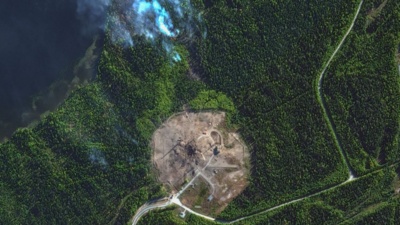
Failed test of Russian RS-28 Sarmat missile captured in satellite imagery (Pic credit: George Barros)
Satellite imagery from
Maxar
taken on September 21 reveals a potential failure during a test of a Russian
RS-28 Sarmat
intercontinental ballistic missile at the Plesetsk Cosmodrome in northern Russia.
The images show a large crater, approximately 60 metres (200 feet) wide, at the launch silo, along with damage to the surrounding area that was not present in earlier imagery from the same month.
Arms experts are uncertain whether the liquid-fuelled Sarmat failed during the launch itself or if an accident occurred during the defuelling process.
Pavel Podvig, an analyst based in Geneva who runs the
Russian Nuclear Forces project
, said, "By all indications, it was a failed test. It's a big hole in the ground," adding, "There was a serious incident with the missile and the silo."
The
Russian defence ministry
has not responded yet and has not made any announcements regarding planned Sarmat tests in recent days.
The RS-28 Sarmat, also known as
Satan II
, is a formidable weapon with a range of 18,000 km (11,000 miles), a launch weight of over 208 tonnes, and the capacity to carry up to 16 multiple independently targetable re-entry vehicle nuclear warheads, as well as some Avangard hypersonic glide vehicles, according to Russian media reports.

 7 months ago
101
7 months ago
101




























 English (US)
English (US)